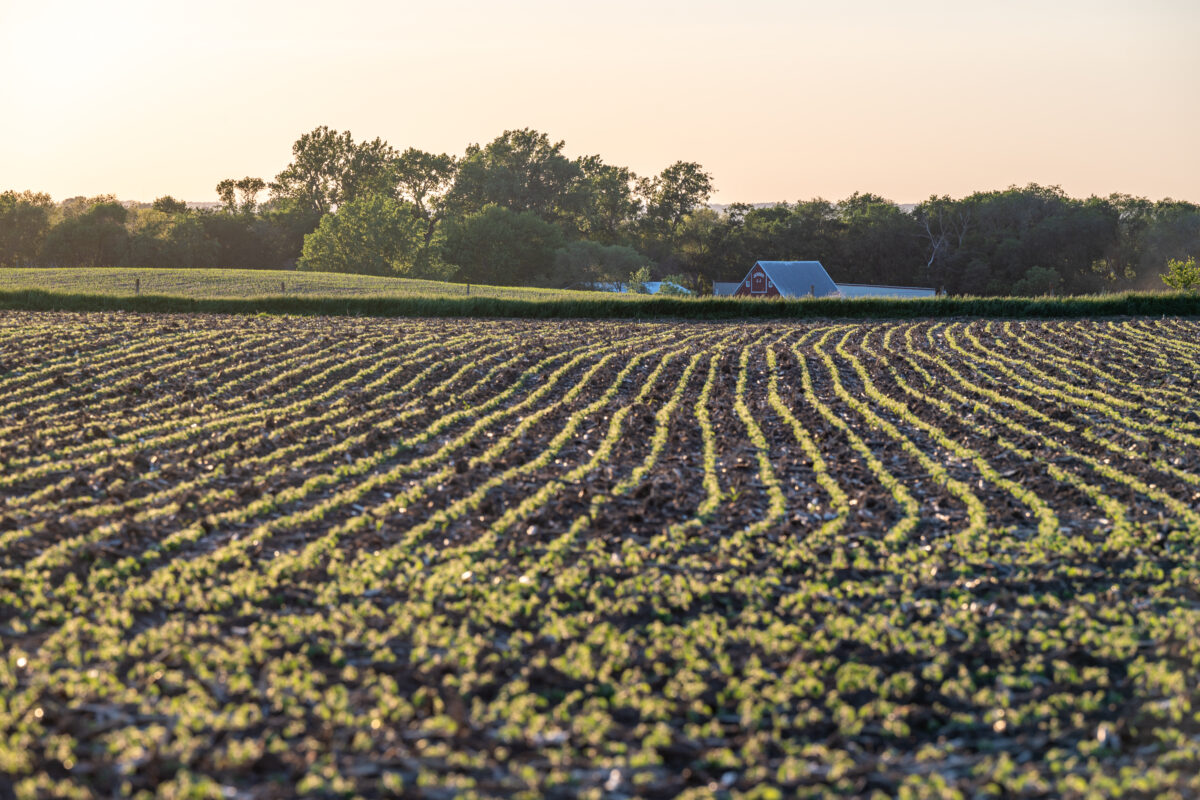New Crush Facility to Impact Minnesota and Beyond

The AIC serves as an incubator for agriculture innovations, with a goal to create jobs and increase the value of agriculture in the region, state and nation.
Last month, Matthew Krueger spent his evening piloting a combine while watching the late summer sun drift to the horizon on his farm near East Grand Forks, Minnesota. He had a lot on his mind as he was starting the 2023 soybean harvest. Early yield results for his first field were promising, and Krueger was hopeful that the beans he was picking would find a home at a good price.
Thirty miles away, officials were preparing the Ag Innovation Campus (AIC) for a grand opening. Hundreds of community members, farmers, business leaders and decision makers hailing from both Minnesota and North Dakota were all eager to see the culmination of an opportunity that had been building over the span of half a decade.
The AIC serves as an incubator for agriculture innovations, with a goal to foster new and novel products, create jobs and increase the value of agriculture in the region, state and nation.
“With the technologies that are going to be proven at this facility, we’re going to be able to help advance all crush plants, not just across the United States, but also the world,” Tom Slunecka, AIC’s acting CEO, says. “So, as we are able to prove out new technologies here, those technologies will make their way into the larger facilities, decreasing their cost and increasing the quality and value of products that they can give to their customers.”
The AIC will be a host to a variety of private and public groups within agriculture by providing the tools and technology to expand value-added agriculture products. At the same time, AIC will offer a campus suitable for real-world learning both in production agriculture and the technologies serving the campus. Farmers in the region will provide soybeans that can be crushed and used as soybean meal and oil to help researchers unlock new uses for soy. The United Soybean Board (USB), Minnesota Soybean Research & Promotion Council, and the soybean checkoff made the grand opening possible.
“Thanks to checkoff support from both the [Minnesota Research & Promotion] Council and the United Soybean Board, the AIC is bringing both public and private industry together to bring ideas and technologies from benchtop all the way to full commercialization,” Tom Frisch, a USB farmer-leader and AIC board member, says.
The centerpiece of the AIC is a commodity crush plant that will be operational in mid-to-late October. The crush plant is the first of three phases for the AIC.
“Phase 1 is a commodity crush plant that uses an extrusion and pressing process to remove crude oil out of the process and produce soybean hulls, soybean meal and crude soybean oil,” Kent Meyers, AIC plant manager, says.
When the crush plant becomes operational, the impact will be immediate for local soybean farmers. Traditionally, soybeans grown in Minnesota had traveled hundreds or even thousands of miles to processing facilities, often resulting in increased costs, logistical bottlenecks and time constraints.
Additional phases will include modern labs, an office complex and rentable research bays.
As a not-for-profit crush facility, the AIC will produce an estimated 240 tons of soybean meal daily, equaling 62,400 tons annually. With three independently operated mechanical crush systems, the AIC can crush organic, non-GMO and GMO soybeans. The crush plant will operate 24 hours a day, seven days a week, for about 350 days a year.
“Just last week, the first specialty soybeans to be crushed at the AIC when it opens were transported from our farm in Dumont to Crookston,” Frisch told the crowd during the grand opening. “They are a high oleic TruSoya variety my family produced in 2022. Watching the life cycle of soybeans in action is fascinating because these same beans will be crushed, and the meal will be used in aquaculture studies. At the same time, the oil will be processed to serve a growing demand for heart-healthy soybean oil.”
The crush plant promises to be a regional partner for farmers in the animal livestock agriculture sector. Area dairy farms can use ground hulls from the process, while the soybean meal will be used in swine and poultry production. Meyers says the oil produced will have many avenues into the marketplace, including food-grade oil and biodiesel.
“Boosting profitability for farmers and our industry is what the AIC is all about, and I’m incredibly proud to have played a part in helping this project start to reach its full potential,” Frisch says.
Planning is underway for phases 2 and 3 at the AIC campus. Businesses, educational institutions and private organizations can test their products at scale within the facility.
“So, technologies that come here will only be here for a period of time. Technologies like microwave drying technologies, like Plasma Blue technology like turning meal into fertilizer technologies that take soybean hauls, and turn them into plastics or cat litter,” Slunecka says. “All of those types of ideas have to be proven at a large enough scale. So the big companies like ADM, Cargill, Bunge, General Mills — all of them want new innovations, but they’re not in a position to try them when they’re still not proven.”
He says that 10 companies at a time will be able to utilize the facility once Phase 3 is complete.
“We’ll also be able to do a lot of education,” Slunecka says. “We’ll be able to train tomorrow’s operators, and we’ll be able to train international teams about the value of U.S. Soy and the value of U.S. technology. That’s really when the whole machine starts to advance agriculture, not here in Minnesota but all across the country.”



